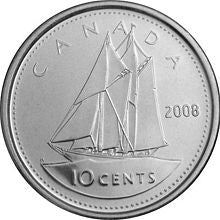Fastest Sailing Ship in the World
28 June, 2012 2 comments Leave a comment
While we were near the south shore of Nova Scotia we made a quick trip to Lunenburg in what the local radio station called 'biblical rain'. That means pouring buckets. But we just had to see Bluenose II before the new launch later this summer. I took these photos of her in drydock.
Bluenose II in Drydock at Lunenburg Harbour, NS
I had to take the photos from the open doorway of a portable toilet so my camera wouldn't get soaked!
Bluenose II Almost Ready to Launch, Lunenburg, NS
We saw a fabulous, informative film in the visitor centre about the original Bluenose, which was a wooden-hulled commercial fishing schooner built in 1921. She was 181 feet long and her main mast had a height of 126 feet above the deck. Her displacement was 285 tons and total sail area was over 11,000 square feet. The film showed footage of her sailing and I was blown away by her massive size and graceful strength.
While the lifespan of most schooners was just 10 or 12 years, for 17 consecutive years Bluenose won the annual International Fishermans' Trophy (racing 40 miles against schooners from Maine). Her highest average speed was 16 knots, which made her the fastest sailing ship in the world. In 1938 when the racing series ended, she was named Queen of the North Atlantic Fishing Fleet. Bluenose has been pictured on the back of the Canadian dime (10 cent piece) from 1937 to this day.
Canadian Dime (photo from Wikipedia)
Every year, Bluenose earned her keep by fishing on the Grand Banks, surviving many storms, gales and the wear and tear of commercial use, but World War II marked the end of the great fishing schooners with the advent of diesel-powered steel trawlers. In 1942, Bluenose was sold to the West Indian Trading Company who removed her masts, added engines and used her to haul freight in the Caribbean. Four years later she struck a Haitian reef and sank. (There is a commemorative plaque on the ocean floor at the site of the wreck.)
Once Bluenose was lost, everyone realized what a tragedy it was that this world-famous, hard-working ship had not been preserved. Eventually in 1963, an identical schooner, Bluenose II, was built from the original plans, in the same shipyard and by some of the same men who built the first one. It was used as a showpiece and was sold to the government of Nova Scotia for $1 in 1971.
Bluenose II is now almost 50 years old and has been repaired many times, but this latest visit to drydock to replace the entire wooden hull and keel is costing $16 million.
If you would like to see photos of the restoration or read more history of Bluenose, they have a great web site http://bluenose.novascotia.ca/
As we near Canada Day later this week, it is very fitting that I pay tribute in my blog to this symbol of Canadian excellence in ship design, shipbuilding and seamanship. Happy Canada Day, Bluenose II. You're a grand lady and I'm proud to have met you.
Subscribe to Karen's newsletter for updates about her artist's life.








Thanks Bette! When we parked for about an hour at the dockyard, our truck was parked facing downhill. When we came back to leave, there was about 50 gallons of water collected in the truck bed. And we have motorcycled in biblical rain too!. Have a great summer. Hi to Paul.
Hey John and Karen! Paul and I took a similar trip as you guys are doing, only we went on the motorcycle! And got caught one day in rain, just as you are depicting in these photos. I never knew that a leather jacket could make that kind of “squelching” sound, until that day!! Love your photos – and have a wonderful trip!
Paul and Bette Hodgins